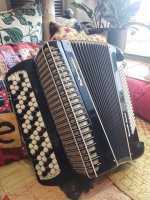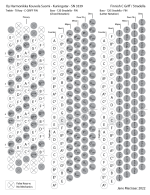Briegley
Member
Having drawn up a key layout for myself while I learn to play my new friend, I thought it might be useful information for the next person looking to decipher a Finnish / Skandinavian made accordion. Having looked at a few during my research, while many different layouts were sometimes used, it also not unlike swedish, norwegian and danish c-griff accordions as well. I still think shes a beaut and I'm having great fun. 






